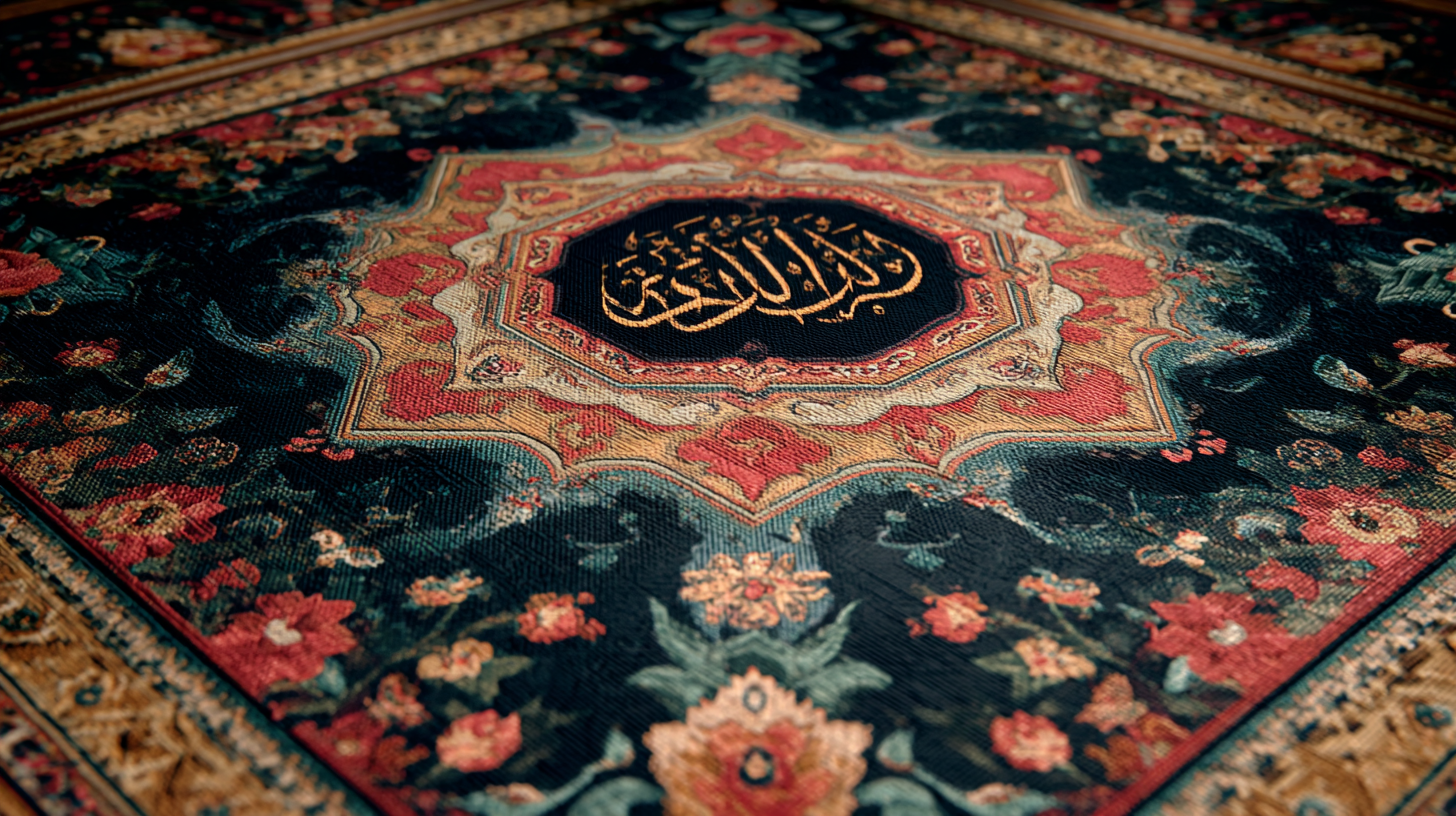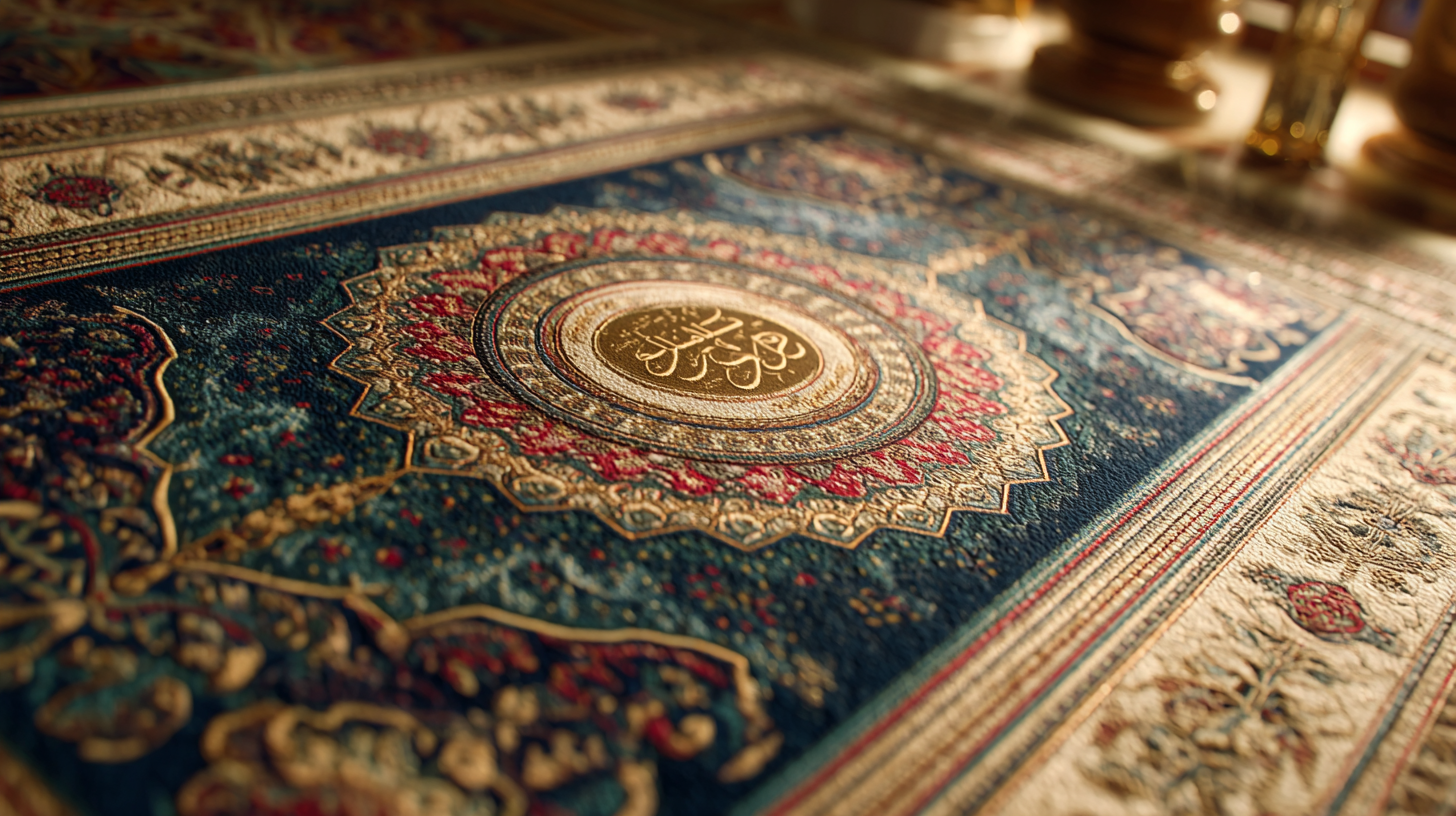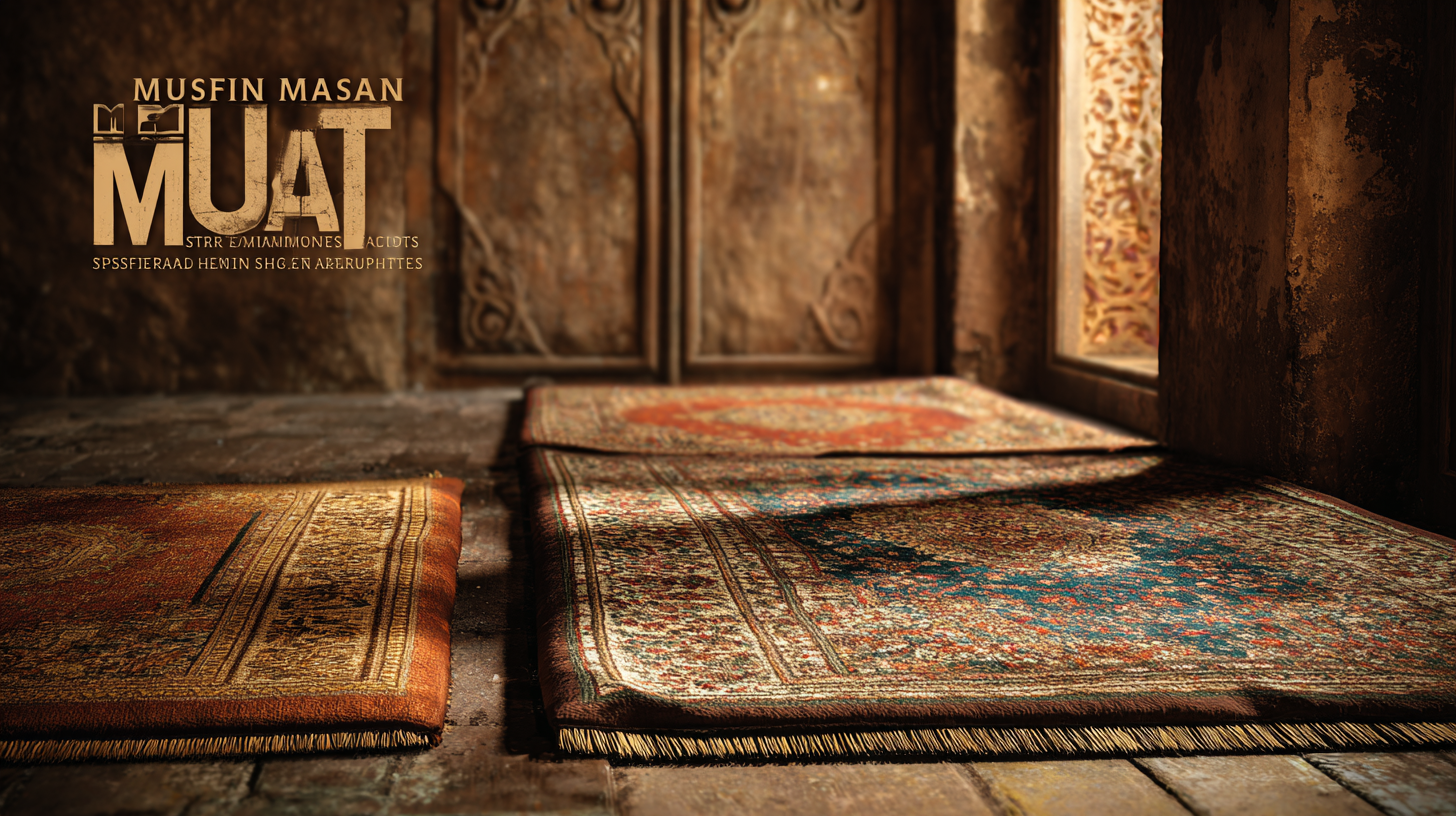
-
Home
-
About Us
-
Products
-
News
-
Blog
-
Contact Us
Leave Your Message

As the global market for religious products continues to evolve, the Muslim Prayer Mat sector is experiencing significant transformation, driven by innovative designs and enhanced functionality. According to a recent report by Market Research Future, the Islamic lifestyle market, which encompasses products like prayer mats, is projected to reach USD 200 billion by 2025, reflecting a growing demand for high-quality, culturally relevant items. The future of Muslim Prayer Mats lies not only in their traditional purpose but also in their potential integration of technology and sustainable materials. "全球领先制造,中国优质出品" underscores the commitment to quality manufacturing that can meet this rising demand while also appealing to a new generation of environmentally-conscious consumers. As spiritual practices continue to modernize, prayer mats are poised to play a pivotal role in enriching the daily rituals of millions around the world.

The evolution of Muslim prayer mats is witnessing a significant transformation driven by innovative materials and cutting-edge technology. Traditionally crafted from natural fibers, modern prayer mats now incorporate advanced textiles that offer better durability, comfort, and functionality. For instance, mats infused with antimicrobial properties can ensure cleanliness during spiritual practices, safeguarding the health of users. Additionally, the use of lightweight and portable materials has made it easier for Muslims to maintain their prayer rituals, whether at home or while traveling.

As we explore this evolution, it's essential to recognize the intersection of spirituality and technology in the contemporary landscape. Innovations like virtual reality experiences are redefining how religious practices are engaged, allowing individuals to immerse themselves in spiritual environments, even in the digital realm. The emergence of virtual products raises intriguing discussions on the nature of worship, particularly as Muslims interact with new forms of religious expression. These advancements not only enhance the physical experience of prayer through improved mats but also invite a broader conversation about the future of faith in a technologically integrated world.
The integration of smart features into innovative Muslim prayer mats marks a significant evolution in enhancing the prayer experience. These advanced mats, equipped with technology such as user-friendly apps and interactive sensors, are designed to foster deeper engagement during spiritual practices. By providing personalized notifications, guided prayer tutorials, and reminders, these mats not only help users optimize their prayer routines but also create an immersive spiritual environment.
User engagement plays a crucial role in the effectiveness of these innovative prayer mats. Much like the success seen in various e-commerce platforms that prioritize app engagement, these smart mats leverage mobile technology to connect users more efficiently with their faith. The response from users indicates a growing interest in integrating technology into spirituality, enhancing communal worship through shared features and experiences. As these products become more prevalent, they signify a shift towards a more connected, tech-savvy approach to traditional practices, reinforcing the idea that spirituality and technology can coexist harmoniously.
The production of modern prayer mats is experiencing a significant shift towards sustainability, driven by both consumer demand and environmental awareness. As the Muslim community increasingly seeks prayer mats that align with their values, manufacturers are exploring eco-friendly materials and ethical sourcing practices. Innovations such as organic cotton, recycled fabrics, and non-toxic dyes are becoming more prevalent, ensuring that these items not only serve a spiritual purpose but also contribute positively to the planet.

However, the transition to sustainable production is not without its challenges. The textile industry is notorious for its environmental impact, which raises concerns regarding the availability and cost of sustainable materials. Many manufacturers face obstacles in sourcing these eco-friendly options while maintaining affordability for consumers. Additionally, there is a pressing need for greater awareness and education within the Muslim community about the benefits of sustainable prayer mats. By overcoming these hurdles, the industry can make strides toward a future where spirituality and environmental responsibility go hand in hand, fostering a deeper connection between the act of prayer and the stewardship of the Earth.
The global prayer mat sector is poised for significant growth by 2025, driven by increasing interest in innovative designs and sustainable materials. With more consumers seeking unique and functional products for their spiritual practices, manufacturers are exploring new technologies and eco-friendly options. This trend not only enhances the aesthetic appeal of prayer mats but also aligns with the values of environmentally conscious consumers.
To capitalize on this emerging market, businesses should consider incorporating smart technology into their prayer mats. For instance, integrating features like built-in prayer timetables or digital assistants can provide users with a more engaging spiritual experience. Moreover, focusing on customization options, such as personalized designs and sizes, can cater to individual preferences and foster brand loyalty.
Another key opportunity lies in tapping into the e-commerce sector. As more consumers turn to online shopping, a robust digital presence can significantly enhance visibility and accessibility. Invest in a user-friendly website and engaging social media marketing strategies to showcase your innovative products effectively. By addressing these trends and consumer needs, companies can unlock new avenues for growth in the ever-evolving prayer mat market.
This chart illustrates the projected growth opportunities in the global prayer mat sector from 2020 to 2025, highlighting various innovative features anticipated to enhance spiritual practices.
As the world evolves, so too do the tools that aid in spiritual practices, with prayer mats being an integral part of the Muslim experience. Consumer preferences are shifting towards designs that not only resonate aesthetically but also enhance functionality. Today’s discerning consumers are looking for prayer mats that offer a blend of modern styling and traditional significance. Mat textures, colors, and patterns now reflect personal interpretations of spirituality, allowing individuals to express their identities while fulfilling religious obligations.
Functionality is also a significant factor driving innovation in prayer mat design. Features such as portability, durability, and ease of cleaning are becoming non-negotiable requirements for consumers. Many contemporary mats incorporate lightweight materials, enabling worshippers to easily carry them to various locations, whether for travel or communal prayers. Some innovative designs even integrate tech elements, such as QR codes linking to prayer resources or guidance, catering to tech-savvy users who wish to deepen their spiritual practice. This interplay of design and functionality highlights a dynamic trend, as prayer mats evolve into multifunctional companions for modern spirituality.
| Dimension | Consumer Preference (%) |
|---|---|
| Durability | 85% |
| Aesthetic Appeal | 78% |
| Easy to Clean | 73% |
| Portability | 65% |
| Eco-Friendliness | 60% |
| Technological Features (e.g., embedded speakers, mobile app) | 55% |
| Affordability | 50% |